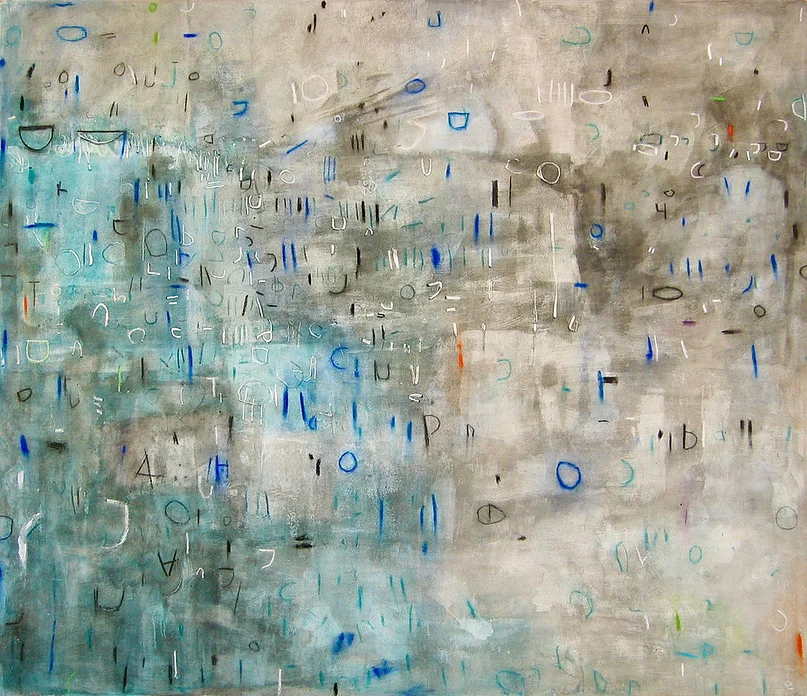From Debris to Sun Dwelling, Tom Fruin’s “Camouflage House” for SBCOAC
It feels like an upside down world these days, but if one looks with a little effort, one can find a right side up experience.
Enter “Camouflage House”: a small, person-sized mini-cathedral built of bright, translucent, colored panels that can be found at the end of a hike in Elings Park.
It’s basically in the middle of nowhere and stands unanchored at the top of a broad, barren, dusty coastal knoll, elevated above the surrounding geography about 2/3rds of a mile up from the shoreline.
On a recent visit this fall, a bright, hazy afternoon sun poured through the installation. It appeared alone near a low, semi-circular stone seating bench overlooking the ocean view to the south—a few small pepper trees providing minimal shade.
The land was bone dry, beat up, and looked like the washed-out fur of an old lion. A cool breeze rose up from the sea’s ruffled, near-shore surface. The ocean was in the air, the Channel Island peaks embraced by fog. The coast stretched out to the west. There was no one around.
This is probably the experience of public art at its best, or most relaxing. The surprise of a light hearted, quirky sculpture; a natural setting that takes time and effort to get to; space to absorb just what in the heck this thing is doing here (and what it might be about); a gentle, peaceful, and quiet afternoon. The world is right side up here, if only for a few fleeting moments.
Art that makes its way to a public setting like Elings Park starts in the artist’s private world—in this case, traceable to childhood. An early discovery for the artist came from the Fruin family’s West Coast Manhattan Beach neighborhood. In the driveway, a telephone technician was splicing and casting off bits of wire. The young Tom Fruin happily collected them—colorful, coated pieces of copper—twisting them into figures and animal shapes. He was delighted.
Fast forward to Manhattan Island, New York, in the later part of the 1990s. We see the artist as a freshly minted college grad (UCSB ’96). No driveway here, only a landing outside his low-rent entry door with steps to the sidewalk below. Each morning as the artist made his way to the street to work at a NYC theater company to build sets and hang lighting, he navigated through refuse of the previous night’s gritty activities. An archeological dig of a dark, upside down, public life.
Fruin saw the daily castoffs in a positive light through his art-minded filter: as a record of the community, a history of sorts of what people were about as seen by what’s left behind. While comfortable with drawing he knew early that he wasn’t a painter. He was a sculptor. Somehow digging through the debris of the city he made connections to his newfound home and the street’s shadowy denizens.
He collected trash off the steps and wired it into delicate, wall hung, quilt-like frameworks. This was the beginning of a series that led him decades later to what would become the framework for structures leading up to the Elings Park piece.
The walls and roof of “Camouflage House” have an effortless vertical and horizontal symmetry within a ridged framework. They’re constructed of salvaged plexiglass pieces, cut and sandwiched together between flat black metal sheets. These sheets are laser cut from sketches, turned into computer files, then assembled by spot welding in the artist’s studio. Hence the unusually clean-cut metal and organic arrangement of colored and transparent shapes held in raised black outlines like a stain glass window. Surprisingly, the metal cut-outs have a loose, hand drawn quality.
Square metal 1.5-inch tubing holds the sandwiched panels together in the house shape. Side walls, end gables and steeply pitched roof panels are bolted flush to the frame. The walls are low, about chest to shoulder high. The gables and roof peak at about 7.5 feet. Each end is opened by an expansive arched opening, sans door.
The footprint is slightly longer than wide and sits on a thin lawn of Astro Turf, laid out like a yoga mat. The whole structure can be broken down and transported in a minivan. This is indeed a portable house.
It’s a house only in name, the shape similar to a first grader’s drawing. It’s not a home or a dwelling. Simple yet complicated. One doesn’t reside there. Not for long, anyway. Is it functional? That depends on what it does. Is it camouflaged? Only if in a kaleidoscope. Does it leak in the rain? Probably. Warm in winter and cool in summer. No. Full of colored light inside with sun by day and moonlight by night. Yes. And a happy bonus—its illuminated after hours by small solar flood lights (located on the floor inside the four corners).
In a way, no one really owns this house. It belongs to everyone and no one. It puts color into the world and helps overcome darkness. The children that visit like it—they call it the “Lighthouse”—and it stands right side up.
Camouflage House, a temporary public sculpture installation by UCSB alumnus and artist Tom Fruin, is supported by the Santa Barbara County Arts Commission in partnership with the County Community Services Department’s Office of Arts and Culture and Parks divisions. Following its Santa Barbara oceanfront debut at Arroyo Burro Beach County Park, the work traveled to Elings Park where it will be installed through the end of October.
Cover photo by Theo Kracke





